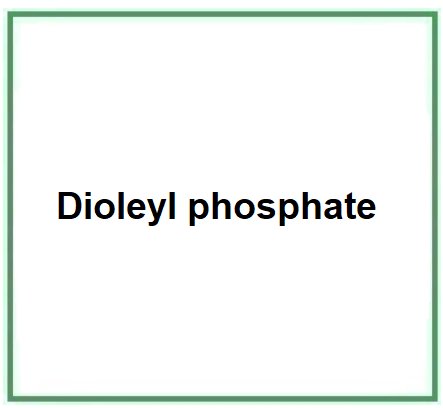Dioleyl phosphate is a chemical compound, an alkyl phosphate, an organic diester of orthophosphoric acid that shares a central phosphate structure and is soluble in both polar and non-polar solvents. A blend obtained by the chemical reaction of phosphoric acid with oleyl alcohol.
The name describes the structure of the molecule:
- Dioleyl refers to a chemical structure derived from oleic acid, a monounsaturated fatty acid. This part of the molecule is responsible for emollient and conditioning properties, making the skin and hair softer and smoother.
- phosphate in this molecule acts as a functional group that can improve the solubility of the ingredient in water and other formulations. Phosphates are often used in cosmetics for their stabilizing and emulsifying properties.
Raw Materials Used in Production.
Dioleyl Phosphate is an ester of phosphoric acid and dioleyl (derived from oleic acid). Oleic acid is a monounsaturated fatty acid found in many plants and animal fats.
Step-by-step Summary of Industrial Production Process.
- Extraction or synthesis of oleic acid from natural sources or through chemical processes.
- Reaction of oleic acid with alcohol to form dioleyl.
- Esterification of dioleyl with phosphoric acid to produce Dioleyl Phosphate.
- Purification of the final product to remove impurities and reaction residues.
- Quality control to ensure the product meets specifications.
Form and Color.
Dioleyl Phosphate typically appears as a clear, oily liquid.

What it is used for and where
Cosmetics
Emulsion stabilizer. Emulsions are thermodynamically unstable. Emulsion stabilisers improve the formation and stability of single and double emulsions. It should be noted that in the structure-function relationship, molar mass plays an important role.
Hair conditioning agent. A large number of ingredients with specific purposes can co-exist in a hair shampoo: cleansers, conditioners, thickeners, mattifying agents, sequestering agents, fragrances, preservatives, special additives. However, the indispensable ingredients are the cleansers and conditioners as they are necessary and sufficient for hair cleansing and manageability. The others act as commercial and non-essential auxiliaries such as: appearance, fragrance, colouring, etc. Hair conditioning agents have the task of increasing shine, manageability and volume, and reducing static electricity, especially after treatments such as colouring, ironing, waving, drying and brushing. They are, in practice, dispersing agents that may contain cationic surfactants, thickeners, emollients, polymers. The typology of hair conditioners includes: intensive conditioners, instant conditioners, thickening conditioners, drying conditioners.
Emulsifying agent. Emulsions are thermodynamically unstable. Emulsifiers have the property to reduce the oil/water or water/oil interfacial tension, improve emulsion stability and also directly influence the stability, sensory properties and surface tension of sunscreens by modulating their filmometric performance.
Emulsion stabilizer. Emulsions are thermodynamically unstable. Emulsion stabilisers improve the formation and stability of single and double emulsions. It should be noted that in the structure-function relationship, molar mass plays an important role.
pH adjuster. This ingredient tends to restore the pH of a cosmetic formulation to its optimal value. The correct pH value is an essential determinant for lipid synthesis in the stratum corneum. The average physiological pH value of the face ranges between 5.67 and 5.76. The hair fibre has a pH value of 3.67.
CAS: 14450-07-8
Safety.
No data are available on the impurities of alkyl phosphates.alkyl phosphate sharing a common central phosphate structure.
![]() Dioleyl phosphate
Dioleyl phosphate 

